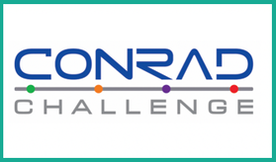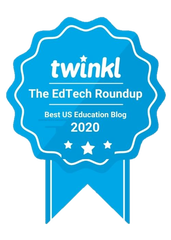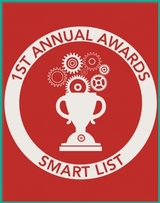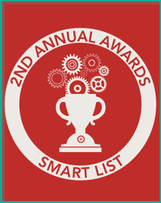
At the Conrad Challenge competition, they took home the top award in the category of Cyber-Technology & Security. In this informative Q&A, Team OOPS shares their development process, future aspirations, and overall thoughts on the competition and product invention:
Let’s start off by telling us about your invention, Opioid Overdose Prevention System:
Umang - Our invention uses a three-part system to help prevent opioid overdose and addiction. One part includes a locked pill dispenser that uses smart-technology to communicate with a smartphone app so that right doses of medication can be taken at proper intervals based on the prescription that the patient has been given, rather than the patient being able to take it whenever they want. This minimizes the chance of the patient taking more than they are prescribed. The dispenser is secured through a personal identification number (PIN) that the patient has to enter each time a pill is ready for them; without it, the container will not open. This number can only be obtained through their smartphone app - after other biometric measures such as a fingerprint have been verified.
Vyomika - There is also a health band worn on the patient’s wrist that monitors the patient’s respiratory rate. If the patient's breathing rate falls below a certain threshold, the wristband is able to send this data through the application to alert the patient, emergency medical services, and healthcare providers that the patient may be in critical condition. This is extremely useful if there’s a case where the patient reacts negatively to any of the opioids or prescriptions, or they are able to access more medicine than is prescribed. Additionally, there are microneedle patches embedded within the band that contain the antidote naloxone, which reverses an opioid overdose. When the system detects that the patient is overdosing, the naloxone will be administered to the patient, reversing the overdose.
Justin - The smartphone app ties the dispenser and wristband together, serving as the communication system between the wristband and dispenser, as well as sends critical information to the patient and healthcare provider. Another important part of the app is the physician portal, where doctors can access the information being stored about opioid use. We hope that with the amount of information we are gathering, we will be able to run machine learning models on the data. Our end goal is not to only use the respiratory rate to predict overdose, but look at the background and previous opioid history to make a better decision of when someone might overdose.
Team OOPS was recognized as Conrad Scholars, the top award, at the virtual Innovation Summit this year. What was it like presenting in this new virtual environment?
Vyomika - The entire project took over eight months to complete, and we were excited to present the final product at the Innovation Summit. Although the event had to move online due to COVID-19, we were still able to connect with and learn from teams around the world. We also got to connect with professionals and experts in the field during the virtual booth expo, which ran very similar to an in-person event. Judges and other students could enter our virtual booth to ask questions and learn more about our invention and journey. One moment that stands out was when one Conrad judge, Mr. Jorge Valdes, from the US patent office talked to us about our product and invited us to visit the patent office in the future.
What has this experience taught you about student entrepreneurship?
Vyomika - Being part of the Innovation Summit took the idea of a “high school project” and brought it into the realm of larger need and impact. I always had faith in our product, but hearing what the judges had to say about our idea as they asked us questions and took our system seriously made us realize that this was bigger than just a high school project.
Umang - Student entrepreneurship has taught us how to look at what’s happening in the world, and use technology that exists to address different issues that will make a difference in people’s lives. The widespread impact of the opioid epidemic motivated us to do more to help those in need. We learned that with the right attitude, goals, and effort, our work as students can be just as good as that of a professional.
Justin - One huge thing that I took away from participating in the Innovation Summit is that taking an idea through the stages of development requires a lot more thought than it initially appears. The numerous drafts and sketches we went through while creating OOPS are a testament to this fact.
What was the most difficult part of getting started with a new invention and what advice would you have for other students to get past this?
Justin - The hardest part is always the idea. For previous products, we have started at hackathons and realized that we spent nearly half the time trying to develop the idea. When we make an idea, we want to be passionate about it and locked onto it. And it can often be hard to find that passionate idea. We recommend spending a lot of time thinking about your product initially so that you don’t have regrets later on. You run into problems when you are trying to make a product. We had to make a lot of solutions for things we didn’t initially think were going to be a problem. You want to make something of high quality and fix issues right away.
Umang - It’s really important to have a vision or a goal in mind. Then you need to make a plan with different milestones to accomplish your goal. Throughout the whole process though, you need to communicate with each other, bounce ideas around, keep an open mind, and stay organized. Organization will allow you to stay on top of things, have your work in one place, and hold each other accountable for tasks. Doing these things will really make things easier and when things do get challenging, think back to your vision.
Vyomika - It’s always important to think your idea through carefully, but no matter how much thought you put into your plan, there are going to be obstacles along the way. You’ll have to find solutions to things you had never even thought about, and it’s in those circumstances when you have to persevere and work hard to make your vision a reality.
Team OOPS is dedicated to further developing their product with the feedback they learned from the judges and hope to visit the US patent office to better understand what’s in the market already and what is proprietary about their product. In fact, after the summit, Team OOPS was selected by Arent Fox for pro-bono patent services, valued at $20,000, and as part of the Conrad Challenge awards.












